After arriving at Penzance Station we were too early to pick up our hire car so decided to settle for a coffee while we waited. Our visit to Cornwall was to finish our Rodda family history tour that didn't quite go to plan two years ago.
It didn’t take us long to find connections to the family name in Cornwall as the café we chose had a milk dispenser serving "Rodda’s fresh Cornish milk" and the women who served us was married to a Rodda, so our family tour had begun
.
As usual our pre-booked hire car was not available so instead we were given a Peugeot station wagon which was fine as our luggage fitted. First stop along the route was St. Michael’s Mount where we had pre-arranged to pick up our Heritage passes.
To get to St. Michaels Mount you can walk across the causeway at low tide but at high tide you have to access it by small boat. Our visit coincided with high tide so it was a reluctant Sally who climbed aboard and held on as we bobbed our way across the waves to the small harbour which serves the Mount.
After collecting our passes we set off up the steep goat track consisting of rock like cobblestones that made up the path leading to the Castle perched high on the Mount. On the way we checked out the cannons pointing out to sea as the Mount was fortified during the 2nd World War.
After a fairly gruelling climb we reached the top and made our way into the Castle and priory. Apparently the priory was demolished by an earthquake in the 12th century and was rebuilt in the 14th century and it is still in use today.
St. Michaels Mount is steeped in rich history having been sieged by kings on many occasions. Since the 17th century the St Aubyn family have had ownership of the Mount and a member of the family is still in residence today
.
After lunch our second stop was the small town of St. Just which is situated just north of Lands’ End. The purpose of our visit was to see the church where our great grandfather Thomas (Preaching Tom) Rodda married his first wife Selena Wakfer in 1853 prior to them setting sail for Australia in 1855. Unfortunately during the voyage Selina died leaving Tom a widower on his arrival in South Australia.
Our great grandmother (Tom’s second wife) had an equally unfortunate journey to Australia when her husband and one of her small children died on route. She met and married our great grandfather Thomas in Wallaroo, SA .
I had visited the St. Just church when in the UK seventeen years ago but on today's visit I was surprised by the churches advanced decaying condition. Sally and I wandered through the old graveyard and couldn’t locate any Rodda’s buried there despite my photographing a gravestone bearing Mathew Rodda’s name on our last visit
.
We decided to enter the church and noted that its interior had not changed from photographs in the family book taken over 100 years ago. After leaving a donation in the “restoration fund box” Sal and I left feeling that our pilgrimage to stand in the church where our great grandfather had worshipped and married was now complete.
Back in the car we made our way to Gorran Haven and the lovely Llawnroc Hotel. Gorran Haven is another quaint little Cornish seaside village where we will base ourselves for the next couple of days.
The following day we continued our family history tour and again travelled to the West coast of Cornwall to tour the remains of a Tin mine. Prior to migrating to Australia the Rodda’s had been miners for generations so we wanted to find out what made them leave their homeland for an unknown future across the sea.
Our destination was the East Pool Tin mine situated near St. Agnes. This tour was very informative and helped us to understand why our forebears left the beautiful west coast of Cornwall to embark on an arduous and dangerous journey across the sea to Australia.
In the early years Cornwall was the primary producer of Tin for the world market. In the 1800’s Tin was discovered in South Africa, America and Australia which had a devastating effect on the mines situated on the Cornish coast. Work for miners dried up and as they had no other skills it was best for them to leave and ply their mining skills in the new lands.
Hence this is why our great grandfather left Cornwall for Wallaroo Mines in South Australia and where the mining tradition continued in our family with my grandfather, father and also my brother and finally his son-in-law being the last of the miners in our family.
To complete the day Trev and Sal just had to indulge in some afternoon tea that included scones, jam and some of the famous Rodda’s clotted cream. Perhaps those Rodda’s had to diversify from being miners and luckily hit on a winner with their clotted cream that is renowned throughout Cornwall and Devon.
Cornwall
Tuesday, August 13, 2013
 Gorran Haven, England, United Kingdom
Gorran Haven, England, United Kingdom
Other Entries
-
5The beginning of our week in Colombo
Jul 1529 days prior Colombo, Sri Lankaphoto_camera13videocam 0comment 0
Colombo, Sri Lankaphoto_camera13videocam 0comment 0 -
6Galle and its surrounds
Jul 1727 days prior Galle, Sri Lankaphoto_camera26videocam 0comment 0
Galle, Sri Lankaphoto_camera26videocam 0comment 0 -
7Colombo part 2
Jul 1925 days prior Colombo, Sri Lankaphoto_camera10videocam 0comment 0
Colombo, Sri Lankaphoto_camera10videocam 0comment 0 -
8Onward to Copenhagen
Jul 2321 days prior Copenhagen, Denmarkphoto_camera12videocam 0comment 1
Copenhagen, Denmarkphoto_camera12videocam 0comment 1 -
9Beautiful Bergen
Jul 2519 days prior Bergen, Norwayphoto_camera5videocam 0comment 0
Bergen, Norwayphoto_camera5videocam 0comment 0 -
10Flam and Myrdal
Jul 2618 days prior Flåm, Norwayphoto_camera15videocam 0comment 0
Flåm, Norwayphoto_camera15videocam 0comment 0 -
11Oslo
Jul 2717 days prior Oslo, Norwayphoto_camera12videocam 0comment 2
Oslo, Norwayphoto_camera12videocam 0comment 2 -
12Stockholm
Jul 2915 days prior Stockholm, Swedenphoto_camera19videocam 0comment 0
Stockholm, Swedenphoto_camera19videocam 0comment 0 -
13Crossing to Helsinki on the MS Gabriella
Jul 3113 days prior Helsinki, Finlandphoto_camera4videocam 0comment 0
Helsinki, Finlandphoto_camera4videocam 0comment 0 -
14Helsinki
Aug 0112 days prior Helsinki, Finlandphoto_camera17videocam 0comment 0
Helsinki, Finlandphoto_camera17videocam 0comment 0 -
15The Allegro to St. Petersburg
Aug 0310 days prior St. Petersburg, Russian Federationphoto_camera6videocam 0comment 0
St. Petersburg, Russian Federationphoto_camera6videocam 0comment 0 -
16The MS Lev Tolstoy
Aug 049 days prior St. Petersburg, Russian Federationphoto_camera8videocam 0comment 0
St. Petersburg, Russian Federationphoto_camera8videocam 0comment 0 -
17St Petersburg
Aug 049 days prior St. Petersburg, Russian Federationphoto_camera14videocam 0comment 2
St. Petersburg, Russian Federationphoto_camera14videocam 0comment 2 -
18Cruise from Mandrogi to Kizhi Island.
Aug 058 days prior Verkhniye Mandrogi, Russian Federationphoto_camera21videocam 0comment 1
Verkhniye Mandrogi, Russian Federationphoto_camera21videocam 0comment 1 -
19Uglich to Goritsy
Aug 076 days prior Uglich, Russian Federationphoto_camera20videocam 0comment 0
Uglich, Russian Federationphoto_camera20videocam 0comment 0 -
20Moscow then back to St. Petersburg
Aug 094 days prior Moscow, Russian Federationphoto_camera17videocam 0comment 0
Moscow, Russian Federationphoto_camera17videocam 0comment 0 -
21St. Petersburg to London
Aug 094 days prior London, United Kingdomphoto_camera22videocam 0comment 0
London, United Kingdomphoto_camera22videocam 0comment 0 -
22Cornwall
Aug 13 Gorran Haven, United Kingdomphoto_camera12videocam 0comment 0
Gorran Haven, United Kingdomphoto_camera12videocam 0comment 0 -
23Lyme Regis, in Dorset to Llanaber, in Wales
Aug 196 days later Lyme Regis, United Kingdomphoto_camera13videocam 0comment 0
Lyme Regis, United Kingdomphoto_camera13videocam 0comment 0 -
24Dublin to Galway
Aug 207 days later Dublin, Irelandphoto_camera25videocam 0comment 1
Dublin, Irelandphoto_camera25videocam 0comment 1 -
25Galway to Glin
Aug 2310 days later Glin, Irelandphoto_camera11videocam 0comment 0
Glin, Irelandphoto_camera11videocam 0comment 0 -
26Glin to Garrestown
Aug 2411 days later Kinsale, Irelandphoto_camera7videocam 0comment 0
Kinsale, Irelandphoto_camera7videocam 0comment 0 -
27Garretstown to Ferrycarrig via Cobh
Aug 2512 days later Wexford, Irelandphoto_camera16videocam 0comment 0
Wexford, Irelandphoto_camera16videocam 0comment 0 -
28Our day in Dublin
Aug 2613 days later Dublin, Irelandphoto_camera1videocam 0comment 0
Dublin, Irelandphoto_camera1videocam 0comment 0 -
29Dublin to Paris
Aug 2714 days later Paris, Francephoto_camera15videocam 0comment 0
Paris, Francephoto_camera15videocam 0comment 0 -
30Vernon and Monet's Garden
Aug 2815 days later Vernon, Francephoto_camera26videocam 0comment 0
Vernon, Francephoto_camera26videocam 0comment 0 -
31Rouen and our visit to the Normandy Beaches
Aug 3017 days later Rouen, Francephoto_camera50videocam 0comment 0
Rouen, Francephoto_camera50videocam 0comment 0 -
32Conflans then back to Paris
Sep 0119 days later Conflans Sainte Honorine, Francephoto_camera15videocam 0comment 0
Conflans Sainte Honorine, Francephoto_camera15videocam 0comment 0 -
33Les Andleys to Conflans
Aug 3118 days later Les Andelys, Francephoto_camera0videocam 0comment 0
Les Andelys, Francephoto_camera0videocam 0comment 0 -
34Paris to Dubai
Sep 0321 days later Paris, Francephoto_camera1videocam 0comment 0
Paris, Francephoto_camera1videocam 0comment 0 -
35Colombo take 2
Sep 0422 days later Colombo, Sri Lankaphoto_camera0videocam 0comment 0
Colombo, Sri Lankaphoto_camera0videocam 0comment 0 -
36Singapore take 2
Sep 0725 days later Singapore, Singaporephoto_camera1videocam 0comment 0
Singapore, Singaporephoto_camera1videocam 0comment 0

 Gorran Haven, England, United Kingdom
Gorran Haven, England, United Kingdom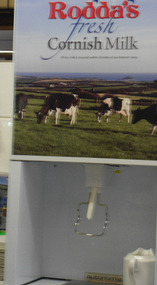
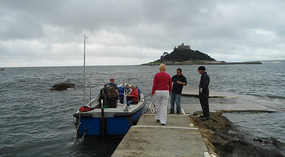
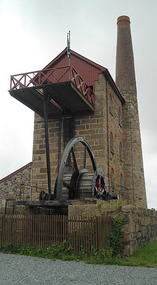











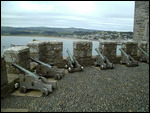
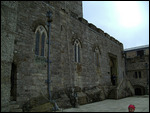



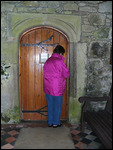


2025-05-22